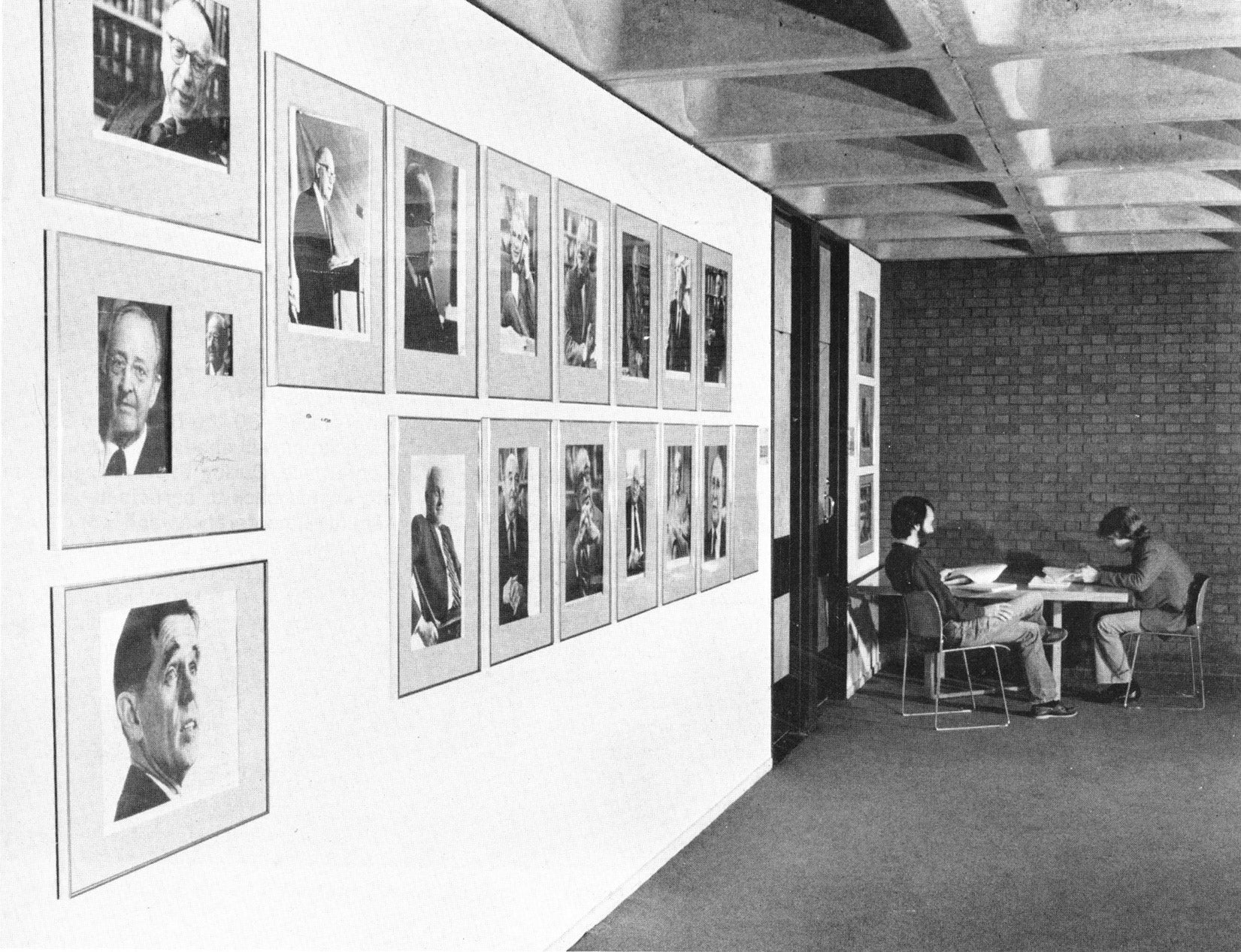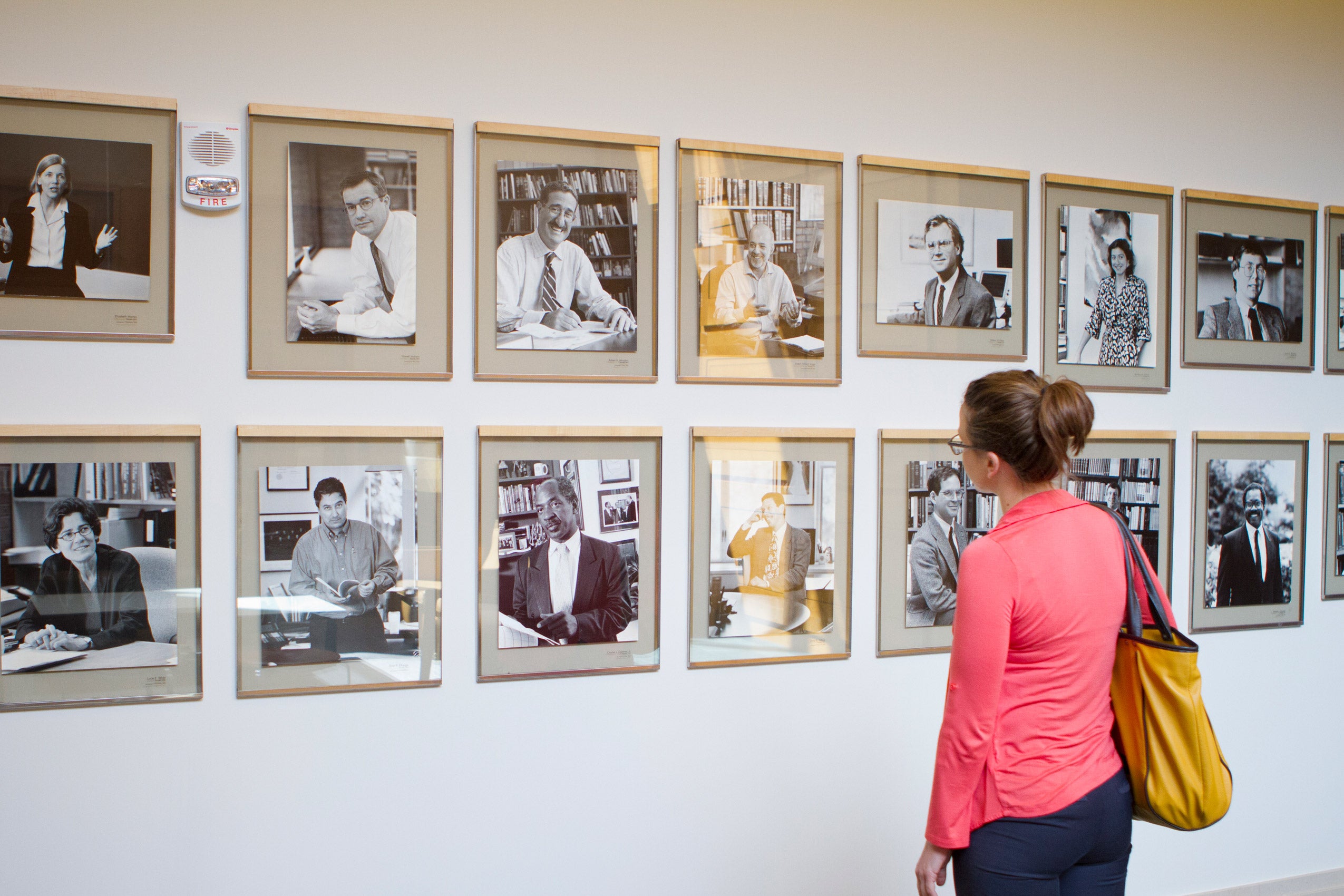The first and second floors of Wasserstein Hall feature over 180 photographs of Harvard Law School professors. Located at an apex of social activity on campus, the portraits are a backdrop for the daily routines and informal interactions of students and faculty members. Professors have come to appreciate the photographs as one of the honors of receiving tenure, and alumni often seek out photos of their favorite professors while on campus for reunions or other events.
The portraits provide a historical snapshot of changes in the school over time. While the exhibit now reflects the growing diversity of the faculty, the chronological arrangement makes clear that the institution’s earlier history was predominantly white and male.

Professor David Wilkins ’80, who joined the faculty in 1986 as an assistant professor, remembers walking past portraits of legendary professors, wondering if his image would ever join theirs. “Then when I decided I really did love this job and I really did want to be good at it, having my picture up there became kind of a symbolic motivation for me.” More than 20 years later, the portraits have taken on deeper significance for Wilkins. “It’s a chance to see some of my colleagues that are no longer with us. Every time I walk up the stairs and see Derrick Bell’s portrait I say hello to him. He was probably one of the biggest inspirations for me. It’s a chance to remember people who were very important to you.”
Harvard Law School has a long tradition of displaying faculty likenesses on the walls around campus. Paintings of faculty were regularly commissioned or given to the school beginning in 1848 with a student-sponsored portrait of Simon Greenleaf. There are nearly 100 paintings in the Law School’s Faculty Portrait Collection, 40 percent of which were acquired or commissioned during the deanship of Roscoe Pound (1916-1936). Dean Pound began an initiative to expand the school’s collection of art and artifacts. He envisioned a museum of law at Harvard Law School and his efforts represent the core of the Law School’s visual collections today.
As the number of faculty members increased significantly toward the mid-20th century, and sitting for painted portraits fell generally out of fashion, so did the regular commissioning of faculty portraits. In the late 1970s, Bernice Loss, curator of the Harvard Law School art collection, proposed reviving the tradition but in a new medium. In 1977, she commissioned photographic portraits of 33 tenured faculty members, beginning with Austin Scott, then 91, who had received tenure in 1914.

The exhibit, which hung initially in Pound Hall, was meant to be a fluid display that would grow and change over time.
New portraits of tenured faculty were regularly added until the early 1990s when updates to the exhibit halted for nearly ten years, after Loss retired. Wilkins was one of several professors in the queue. “I was waiting and dreaming about having my photograph join the legends of Harvard Law School,” he recalls. “I finally said, ‘what’s up with this?’” Wilkins’ encouragement played a role in getting the project going again. In 2003, Dean Elena Kagan ’86 lead the effort to update and redesign the exhibit. Wilkins looks back at the delay with a sense of humor. “I’m lucky. The fact that they delayed [my photograph] for a while means I don’t look quite as different as many of my colleagues do.”
In 2010, Dean Martha Minow expanded the scope of the exhibit to include clinical professors of law and professors of practice. In 2012, the portraits were moved to the new Wasserstein Hall, Caspersen Student Center, Clinical Wing Building (WCC).
